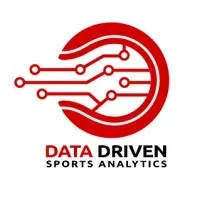Data-driven sports analytics is reshaping the way teams prepare, train, and compete. In today’s high-stakes environment, coaches rely on data to complement intuition, turning patterns in player performance, team dynamics, and opponent tendencies into actionable strategies. From amateur clubs to major leagues, the power of data-driven insights is clear: better questions lead to better decisions, and better decisions translate to better results. This article explores how analytics are transforming games, the kinds of data and models that drive them, and the practical implications for players, coaches, and fans. By weaving data analytics in sports into clear, readable insights, the article demonstrates how informed decisions guide smarter choices.
Viewed through a different lens, the field can be described as quantitative sports analysis that blends sensor data, video analytics, and game-event data to reveal drivers of success. Scholars refer to performance analytics in athletics, predictive modeling for teams, and decision-support dashboards that translate numbers into coaching actions. Another angle is to treat it as data-informed storytelling about athletes and squads, where big data in sports feeds models that forecast risk, optimize workloads, and guide development. Ultimately, practitioners balance intuition with evidence, turning complex measurements into practical playbooks that teams can apply on the field.
Data-driven Sports Analytics in Practice: From Data Collection to Real-Time Decisions
Data-driven sports analytics transforms streams of data from wearables, GPS trackers, video analysis, and in-game events into actionable insights that guide on-field decisions. By combining data collection with statistical modeling and domain expertise, teams translate raw measurements—such as speed, distance, and impact—into meaningful performance indicators. This approach embodies data analytics in sports, enabling coaches to forecast outcomes, optimize training, and align strategies with observable patterns in player performance and team dynamics. In this way, data-driven decision making in sports becomes a structured, repeatable process that informs tactical choices while preserving the athlete’s context and goals.
Practically, coaches and analysts leverage sports analytics to illuminate what matters most during competition and practice. Real-time dashboards monitor fatigue trajectories, workload balance, and interaction patterns, helping decision makers adjust lineups, rotations, and conditioning plans mid-series or mid-game. The emphasis is not on overwhelming the coach with data, but on surfacing evidence-based signals that improve decision quality—leading to better shot selection, smarter matchups, and fewer injuries through data-driven decision making in sports. This integration of data sources, analytics tools, and human judgment creates a feedback loop that continually refines tactics and preparation.
Harnessing Big Data and Performance Analytics in Athletics for Competitive Advantage
Big data in sports captures the scale, velocity, and variety of information now available—from sensor streams to biomechanical metrics and video-derived events. This deluge requires robust storage, governance, and processing to extract signal from noise. By applying predictive models and network analyses, teams quantify risk, project development trajectories, and identify performance drivers that matter for specific roles. The result is a data-driven ecosystem where data analytics in sports informs acquisition, development, and strategic planning, underscoring how performance analytics in athletics translates raw numbers into practical improvements across training and competition.
To translate analytics into advantage, organizations blend quantitative insights with domain expertise, ensuring transparent interpretation of results and ethical data use. Challenges such as data quality, privacy concerns around wearables, and the potential for over-reliance on metrics must be managed. When done well, this approach strengthens data-driven decision making in sports by pairing objective evidence with leadership, chemistry, and resilience—factors that analytics alone cannot capture. The outcome is smarter performance programs, healthier athletes, and a richer, more engaging narrative for players, coaches, and fans alike.
Frequently Asked Questions
What is data-driven sports analytics and how does it inform decision making in sports?
Data-driven sports analytics combines data collection, statistical modeling, and domain expertise to produce insights that influence training, strategy, and in-game decisions. Data analytics in sports gathers metrics from wearables, GPS, video analysis, and event data to measure performance, forecast outcomes, and guide action. In practice, this approach supports data-driven decision making in sports by optimizing conditioning, managing load, and informing lineup decisions based on objective evidence, not intuition.
What data sources and modeling techniques power performance analytics in athletics and big data in sports?
Performance analytics in athletics relies on diverse data sources—wearables for heart rate and velocity, video analytics for event-level actions, and game footage—to build predictive models that estimate risk, performance, and success probability. Big data in sports enables more robust analytics through machine learning, Bayesian inference, and network analysis, turning raw data into actionable insights for training plans, injury prevention, and strategic decisions. These insights support data-driven decision making in sports by aligning analytics with coaching goals for real-time adjustments and long-term development.
| Section | Key Idea | Notes / Examples |
|---|---|---|
| What is Data-Driven Sports Analytics? | Core concept | Combines data collection, statistical modeling, and domain expertise to influence on-field decisions. Data is captured via wearables, GPS, video, and events; patterns are detected, outcomes forecast, and the framework makes analytics transparent and repeatable. |
| From Data to Decisions: How Analytics Reach the Field | Real-world impact | Not just dashboards; informs real-time decisions and long-term strategies. Training uses data to tailor conditioning, manage load, and optimize recovery. In competition, lineups, rotations, and roles are guided by objective evidence. Outcomes linked to data include reduced injury risk and smarter play. |
| Key Data Sources in Modern Sports | Diverse sources | Wearables and sensors provide granular metrics (heart rate, velocity, distance). Video analytics converts action to events (passes, shots, pressures). Event-level data adds context for sequences and tactics. Data feeds predictive models for risk and performance. Also used in scouting and development. |
| Performance Analytics in Athletics | About metrics that matter | Translating raw numbers into meaningful stories; metrics vary by sport and role. Example: basketball guard – shot selection and pace; pitcher – velocity and sequencing. Alignment with training drives targeted improvement and confidence. |
| Big Data in Sports | Scale and governance | Data streams from sensors, cameras, and footage require storage and governance. Distinguish signal from noise. Techniques include machine learning, Bayesian inference, and network analysis. Decisions are evidence-based and continuously updated. |
| Real-World Applications | Practical impact | In-game dashboards monitor fatigue and performance trajectories. Training uses periodization and recovery protocols. Talent pipelines quantify potential and development curves. Fans get enhanced game-day storytelling through advanced stats. |
| Challenges, Ethics, and the Human Element | Limitations and values | Data quality and privacy are critical. Avoid bias, missing values, and misaligned definitions. Balance transparency with competitive concerns. Do not replace human judgment; blend quantitative insights with qualitative expertise. |
| The Future of Data-Driven Sports Analytics | Emerging trends | Expect more real-time analytics, tighter AI integration, and personalized insights. Expanded data sources and scenario simulations will improve decision making. |
Summary
Data-driven sports analytics is reshaping how teams train, compete, and win. By combining data analytics in sports with domain expertise and thoughtful human judgment, organizations can optimize performance analytics, leverage big data in sports, and advance data-driven decision making across sports. This integrated approach leads to smarter strategies, healthier athletes, and a richer understanding of the game for players, coaches, and fans.



